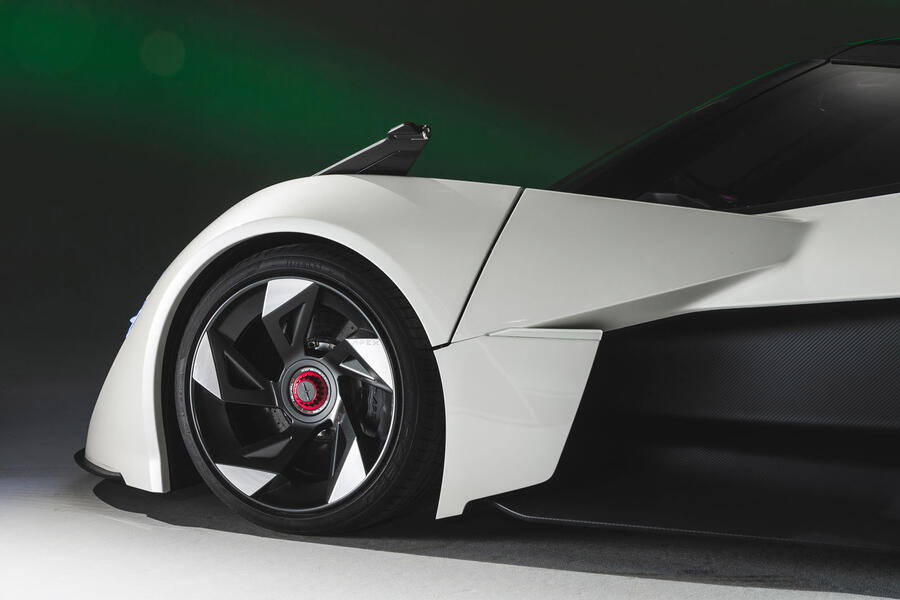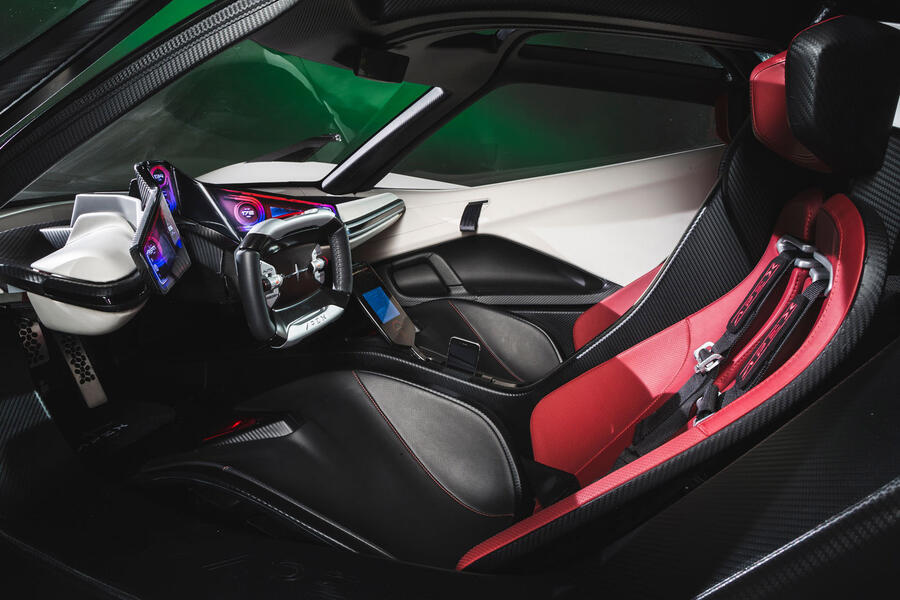Apex says the car is not intended to be a hypercar. “This is reflected in the price, power output and vehicle weight. Instead, this is a sports car that was designed to be light, fast and a statement of intent for Apex to create the world’s finest zero-emissions sports cars which are usable and comfortable on the road but transform into a pure driver’s car on a race track,” it said.

The supercar will have an official range of 320 miles and, via a 350kW CCS connector, can be charged up to 80% in less than 15 minutes.
Apex claims the AP-0 weighs 1200kg – significantly lower than the majority of electric sports cars – thanks to the use of a carbonfibre tub at its core. The structure uses modular spaceframes and a centre spine that links the front and rear. The bodyshell is wrapped around the tub and spine but still exposes the carbonfibre chassis. Batteries are floor mounted at both front and rear in a bid to achieve the lowest possible centre of gravity.
The AP-0 uses a pushrod suspension system, the same as most Formula 1 teams, and has automatic ride height adjustment, using adjustable coilover springs and dampers.
The AP-0 is capable of Level 3 autonomy, which includes automatic emergency braking and lane-keeping assistance, but Apex says the system is advanced enough for Level 4 (self-driving in all but the trickiest scenarios) when it becomes “safely achievable”.
It uses Lidar technology, with sensors mounted high up in the car’s dramatic central fin, to generate detailed, three-dimensional maps of the vehicle’s surroundings. Apex said the technology enhances its driver assistance systems by more accurately identifying potential hazards, pedestrians, cyclists and other vehicles.
It also has a holographic augmented reality display and augmented reality race instructor, to help drivers learn new race tracks.
Designer Guy Colborne said the production version would remain largely unchanged from the concept. “We’re going to work on ingress and egress, by pushing the tub down a bit, for starters. And then practicality aspects – for example, whether we can package in a frunk [front boot] for luggage.”
